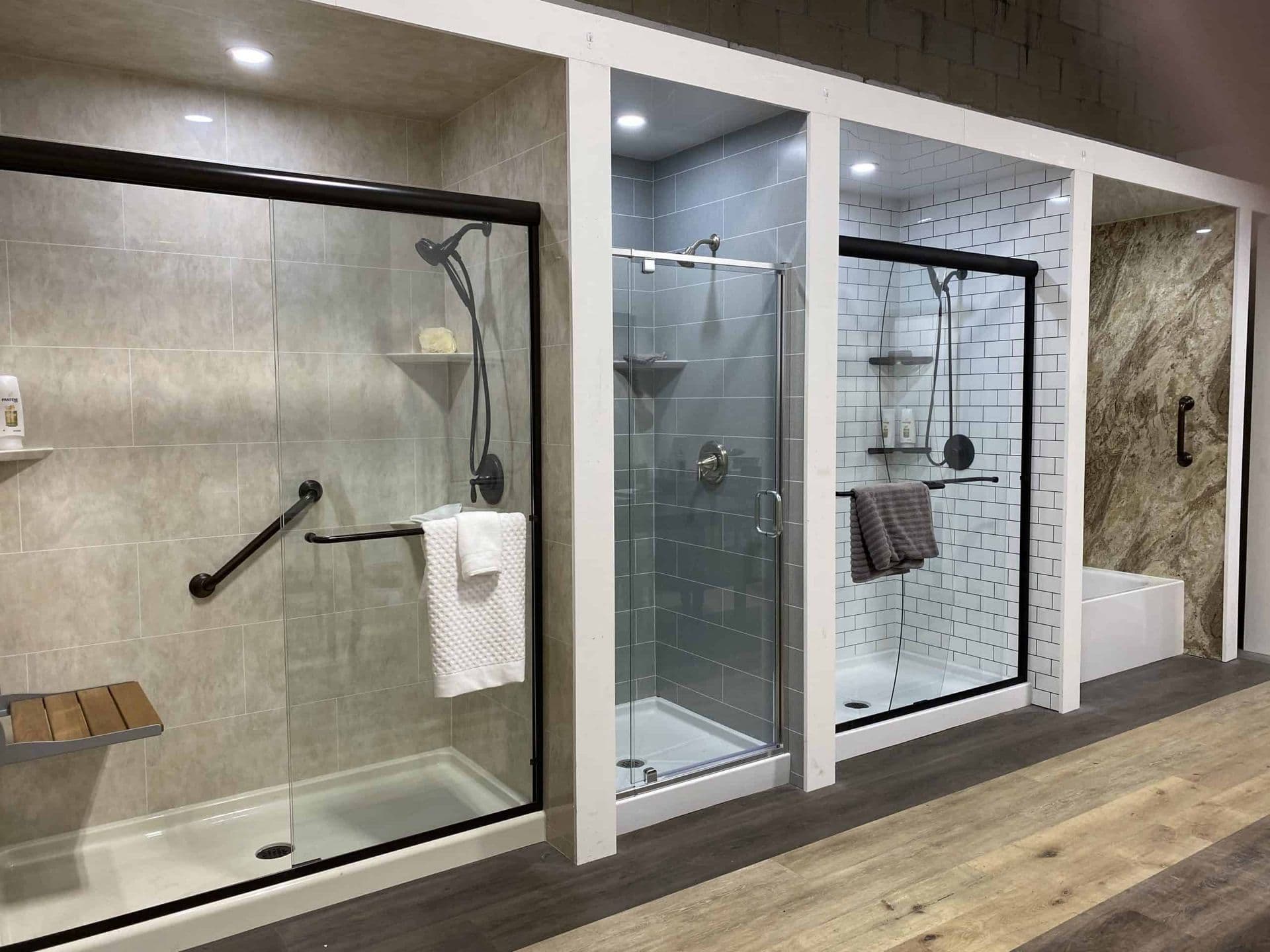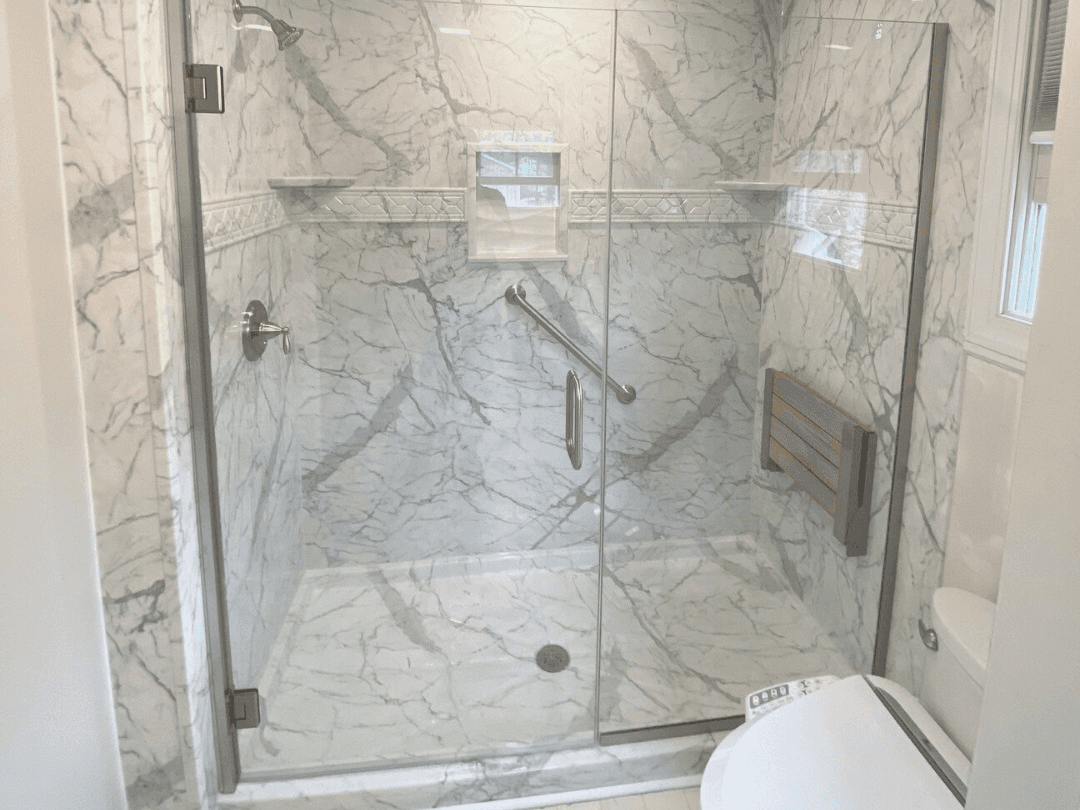
5 Key Differences between Walk-In Showers and Walk-In Tubs
Safe bathing is often on top of the list for most residents who want to age in place. Walk-in showers and walk-in tubs have risen in popularity over the recent years because they give peace of mind and a sense of dignity to the elderly. They help eliminate the concern of struggling with getting in and out of a shower stall or a conventional bathtub. A walk-in shower is completely free of any doors that may impact on other bathroom fittings. It makes the best use of the space and provides a brilliant showering experience.
A walk-in tub serves the same purpose as a traditional bathtub but is designed with a small door on the side that opens into the tub. Both walk-in showers and walk-in tubs are designed to provide a convenient and more comfortable bathing experience. Although they are all intended for people with mobility challenges, they also have their own differences. Below are five key differences between walk-in showers and walk-in tubs.
- Convenience and Comfort
- Hygiene
- Level of Safety
- Water Usage
- Cost of Installation and Maintenance
The water depth in a walk-in tub is deeper than traditional tubs thus it takes a longer time to fill and drain. This reason poses the risk of becoming chilled while waiting for water to fill up. Our skin and blood circulation slow as we age making us less able to respond to chilly temperatures while conserving body heat. Walk-in showers prevent you from getting cold since water can only flow when you turn on the shower. Waiting for water to fill a walk-in bathtub can be incredibly inconvenient if it takes some time to achieve the right water temperature. You also need to remain seated dripping wet as you wait for the tub to drain before exiting. This makes walk-in showers more convenient and comfortable than walk-in tubs.
Sitting upright in a walk-in bathtub cannot be compared to a traditional bathtub, which allows users to submerge themselves in water. Furthermore, you will be more reclined and relaxed in a traditional bathtub. One great benefit of a walk-in shower is that you can have water cleanse your entire body. If you are taller or of average height, it is most likely that only the lower half of your body will be submerged in water, when using a walk-in tub. It leaves you feeling sorely disappointed if you are envisioning warm water soothing your aching shoulders, neck, and back.
Walk-in showers are safer for both the elderly and individuals who are unable to walk. Many walk-in tubs are still designed with a step where you must raise your feet slightly above the narrow doorway to enter the tub. If you rely on a walker for stability, then you will have a hard time maneuvering around this kind of tub. Mobility will also be a problem if you are a wheelchair user since you cannot roll in while staying safely seated in your wheelchair. This is quite different from a walk-in shower since you can easily get in and out while seated on your wheelchair. The tub increases the chances of slipping or falling when transferring yourself from your wheelchair to the walk-in tub.
A walk-in shower saves more water compared to a walk-in tub because you only use it when needed. Turning the switch on and off helps you control the amount of water you need when bathing. On the contrary, a walk-in bathtub is much deeper than the traditional bathtubs and tends to consume more water when filling up. Although swing-out doors make it easier to access the tub, they also present the possibility of flooding if the door is not latched properly. The weight of the water can force the door to open thus spilling out dozens of gallons of water into your home.
Walk-in bathtubs are expensive to install and maintain because they are designed with therapy options that help you relax. The installation may require electrical work and the water heater may need to be upgraded over time. On the other hand, walk-in showers are quite affordable to install and maintain. They also offer you the opportunity to add high-end features and other small bathroom items.
Both walk-in bathtubs and walk-in showers are necessary for seniors. The decision to choose any of the two options depends on the level of mobility of the user and other health conditions such as arthritis, joint pains, general muscle stiffness, diabetes, and rheumatism. Anything you do towards improving your bathroom safety is a positive step towards a happy and healthy lifestyle.

Lock in 2025 Pricing!
$1,999 OFF Any Bath Or Shower Remodel
$0 Down, $0 Interest, $0 Payments until 2027!*

$0 Down, $0 Interest, $0 Payments until 2027!*
Bathroom Pros New Jersey
5-Star Reputation
Our customers rate us 5 out of 5 on Google, and more.
Stress-Free Process
Start to finish, you’re in for a pleasant experience.
Special Financing
Payments starting as low as $1.80 per day.

Lock in 2025 Pricing!
$1,999 OFF Any Bath Or Shower Remodel
$0 Down, $0 Interest, $0 Payments until 2027!*
Contact Us

Mon-Fri: 9AM-5PM
Sat: 10AM-3PM
Sun: Closed


